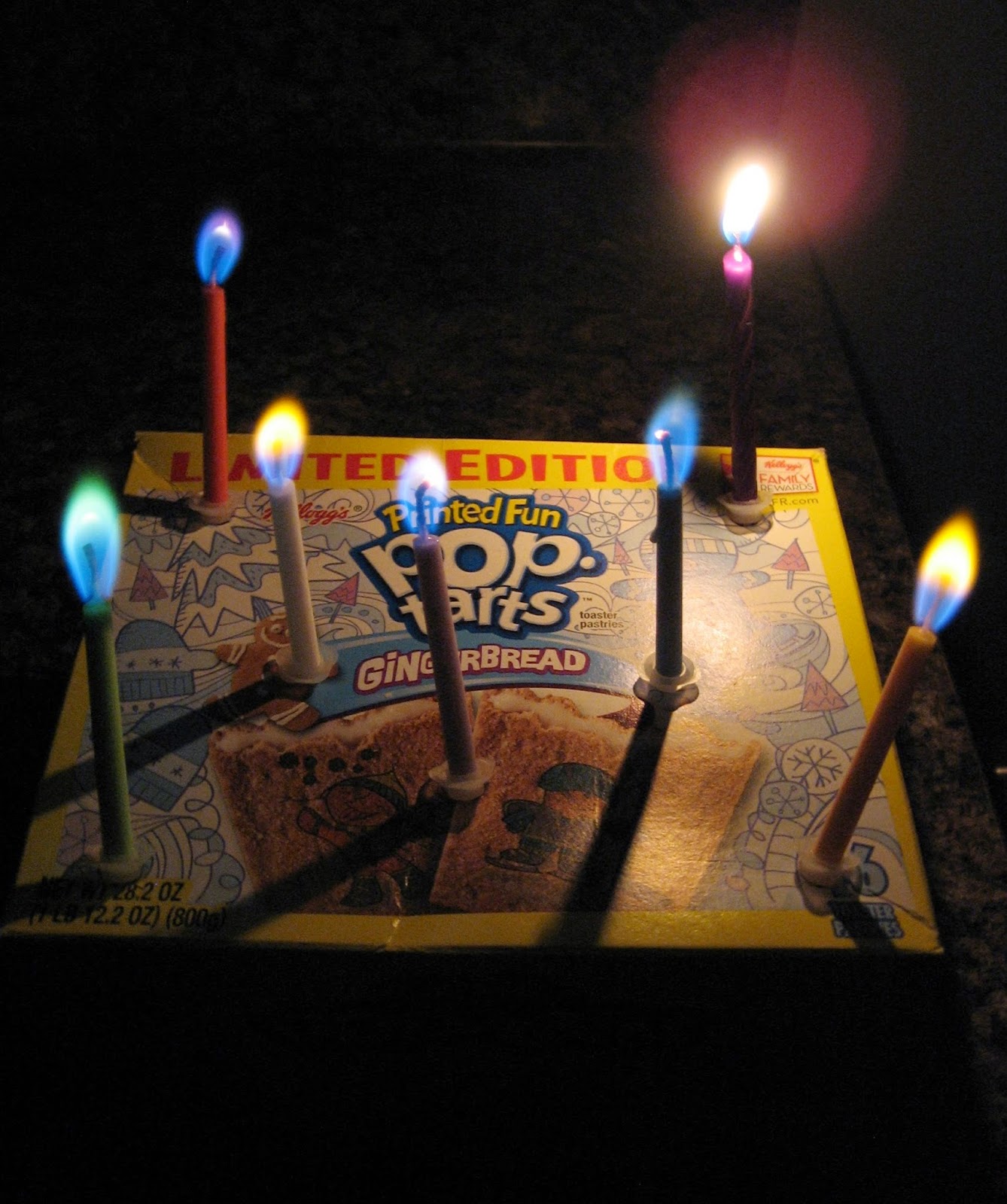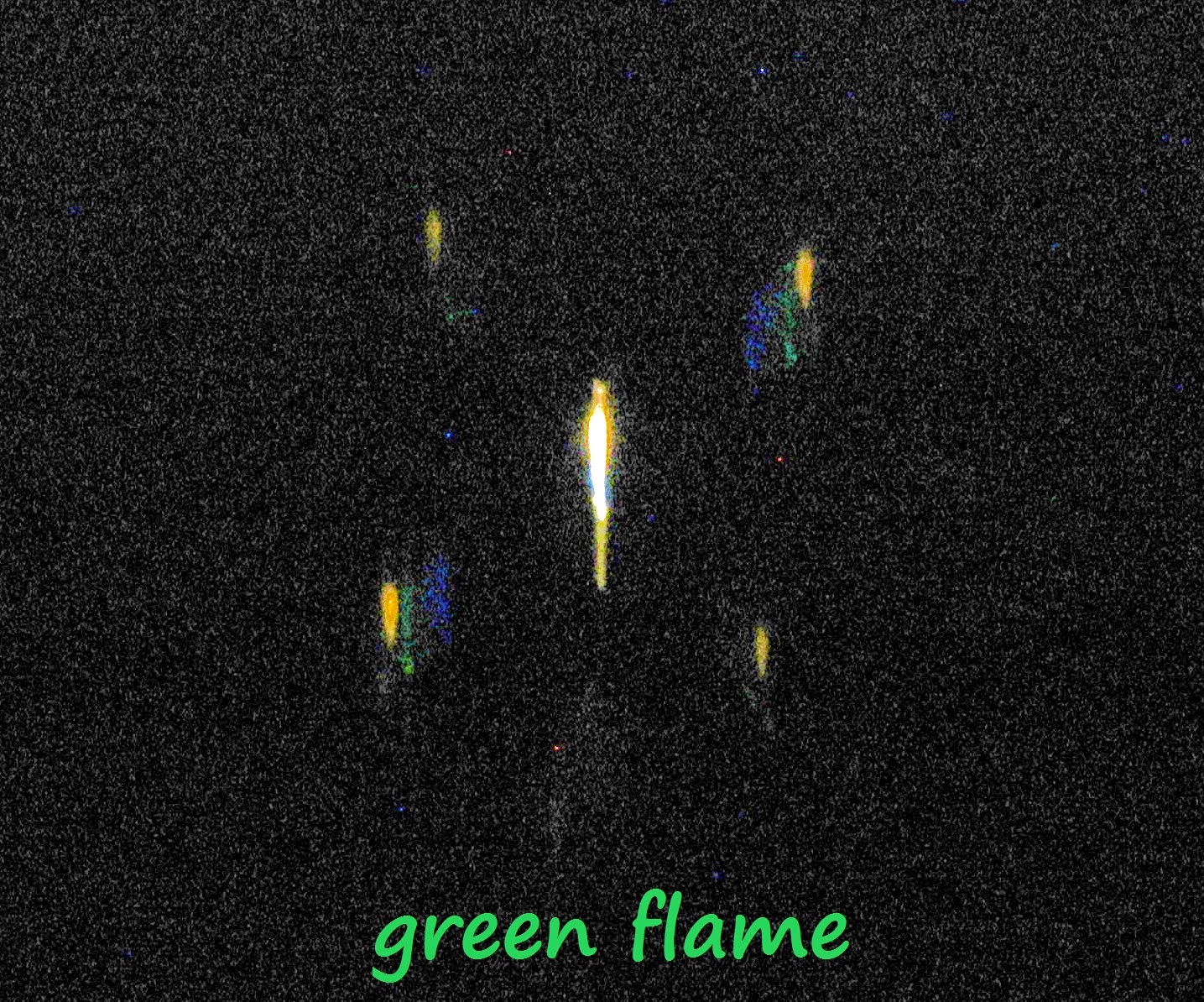Science is one of the subjects we pretty much completely unschool. We have a few science textbooks, and on occasion we read through them, just to be able to say we've "done science", but for the most part our science lessons and projects rise out of the moment. Like, for instance, this weekend, when I spotted the package of ColorMagic colored flame candles, while shopping for supplies for yet another birthday party.
I tossed them in the cart, not for the party, but for a science experiment. I wasn't really sure what sort of experiment, but I know enough about chemistry to know colored flames means burning different sorts of chemicals - and that reminded me vaguely of high school chemistry flame tests.
Flame tests were fun, but not something I've wanted to try out in our kitchen. Check out
this Sci Guys video, if you're not sure why not. Something about burning toxic chemicals, and reactions hot enough to melt tables...and my own knowledge that I know just enough about chemistry to be really dangerous...and...well, you see. But, birthday candles? I can handle birthday candles.
All I had to do was to figure out how to work them into a science lesson.
My first thought was to search for a "How It's Made" type of video for the candles, that would neatly, and quickly explain the science behind the candles - because it was a birthday weekend, and we were busy already. Unfortunately, I didn't find one. But, what I did find was a
YouTuber discussing the candles, and how looking through a spectroscope confirmed his suspicions, that at least one of the candles was burning some sort of sodium compound. Which brought me back to thinking about flame tests.
So, I built a very quick spectroscope, to test out if that would work with the candles, by cutting holes in the top and bottom lids of an empty cereal box, opposite each other, and covering one with a diffraction grating...
...or in this case, one the rainbow viewers from the top of a tube of
last summer's Grab-A-Bubbles...
...and a couple of strips of tinfoil (it's supposed to be razor blades, but I didn't have any on hand), to form a slit over the hole on the other side, and sealing up any cracks that might let light in to the box with duct tape. It was just coincidental, though appropriate that the only duct tape I could find was rainbow patterned...
...because when you aim the slit at a light source, like a window during the day, and look through the lens side, you see the emission spectrum (or rainbow) created by that light. A continuous spectrum from sunlight (where all the colors run into each other) because sunlight contains all the visible wavelengths of light (or something like that)...
...and a discontinuous spectrum for something like a compact fluorescent lamp (or light bulb), where the colors have gaps between them, because the bulb isn't emitting all the wavelengths of light...
...unlike LED light, that is much closer to natural sunlight.
While the children were busy looking through the spectroscope at the windows and light fixtures in the house, I was Googling and perusing high school texts (like
this one, from WikiBooks), so I could throw words like continuous and discontinuous spectral emissions out, and sound like I knew what I was talking about.
Then I set up the candles...
...for the children to look at through the spectroscope and study.
Each burning chemical produces a different spectral emission (like a fingerprint). It's one of the ways scientists can look at distant stars, and know from what sort of gases they are formed.
Burning different chemicals also produces different colored flames. So, we looked up which chemicals produce the colors of flames we had, and then looked up the emission spectra for those chemicals, and compared that with what we saw when we were looking through our spectroscope.
A red flame (or pink) can be produced by burning lithium or strontium chloride. Here is an official emission spectrum for lithium, pulled from Google images (sorry, but I had trouble finding the actual source)...
...and here is a dim (taking pictures of the inside of a cereal box is not always easy) picture of what we saw when looking at the red flame through our spectroscope. What we actually saw was a lot brighter and more impressive, but even here you can see the similarities.
Sodium chloride creates a yellow flame. The emission spectrum for sodium looks something like this...
..which our image did not match completely. We were seeing more blue.
A green flame can be produced by burning cupric sulfate. The emission spectrum for copper looks like...
...which wasn't far from what we saw.
Potassium chloride produces a purple flame. The emission spectrum for potassium...
...shows more red than we were seeing.
A blue flame can be produced by burning cupric chloride. The emission spectrum for copper looks like this...
...and what we saw is below.
After I posted all of these, I found a really good list of flame colors, chemicals, and emission spectra all in one place -
here, so we might have to go back through them all. At any rate, it was an interesting bit of supermarket science, with lots of follow-up potential if anyone ends up being interested. As is usual for us though, we've already bounced on through several other life-related topics, and have dismantled our spectroscope until the topic comes around again.
It's great to be a homeschooler.














































.jpg)



